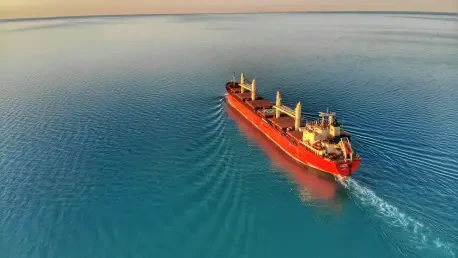Simon Glairy is a distinguished authority in the realm of insurance and Insurtech, with profound insights into risk management and AI-driven risk assessment. In this engaging conversation, Simon sheds light on the European Commission’s recent maritime regulation which mandates vessels to present insurance details when traversing EU waters. We explore the implications, the alignment with global standards, and the efforts to address issues like the increasing shadow fleet activity.
What is the main objective of the new measure adopted by the European Commission regarding vessels passing through EU waters?
The primary aim is to bolster maritime safety and environmental safeguarding around EU coasts by ensuring every vessel, regardless of whether it docks at an EU port, provides proof of insurance. This requirement empowers the EU to enhance oversight and investigation of maritime activities, targeting the risks associated with uninsured or unsafe vessels.
Can you explain the amendment to the Vessel Monitoring Directive 2022/59/EC?
The amendment introduces a Delegated Directive that updates the Mandatory Ship Reporting Systems for both current and future directives. This update mandates that all vessels passing through EU waters are required to submit insurance information, underscoring a commitment to maritime safety and environmental liability.
What kind of information are vessels now required to provide under this new directive?
Vessels must now provide proof of insurance, detailing their coverage and ensuring compliance with safety standards. This step is integral to confirming that operators are financially prepared to handle potential maritime incidents.
Does this requirement apply to vessels that do not enter EU ports but are just passing through EU waters?
Yes, all vessels within EU waters, even those not docking at EU ports, must comply. This comprehensive approach serves to ensure that all maritime activities within the jurisdiction adhere to stringent safety and environmental stipulations.
In what ways does requiring insurance information enhance maritime safety and environmental protection?
By having proof of insurance, there’s accountability. The directive ensures that operators are prepared to address potential accidents, minimizing the impact on local ecosystems and boosting overall maritime safety.
How does this directive impact the EU’s ability to monitor and investigate maritime activities?
It enhances the EU’s capability by increasing transparency and allowing authorities to identify and address ships that pose potential risks due to lack of insurance.
What kind of risks are being addressed by ensuring vessels are properly insured?
The directive aims to mitigate risks associated with maritime accidents, such as oil spills or hazardous material mishaps, and ensures operators have resources to manage these incidents responsibly.
How does this measure contribute to the EU’s commitment to environmental responsibility in the maritime sector?
The measure enforces accountability, making sure that vessels are financially equipped to respond to environmental damage, thereby aligning with international maritime environmental protocols.
What steps are being taken to propose changes to the International Maritime Organization?
The Commission, along with Member States, has put forth proposals for minor updates to several ship reporting systems, underscoring the importance of global cooperation and alignment in enforcing these standards.
How does the new Delegated Directive update Annex I of Directive 2002/59/EC?
The update requires all vessels in reporting zones to provide insurance proof, thereby enhancing regulation against uninsured operations and fostering safety and environmental objectives.
Why is there a need to strengthen oversight of uninsured or unsafe vessels?
Uninsured or unsafe vessels represent significant risks to maritime safety and environmental health. Bolstering oversight helps mitigate these risks and aligns EU policy with broader safety standards.
In what ways does this directive align EU regulations with international standards?
By mandating insurance information, the directive aligns EU practices with global maritime expectations, promoting consistent standards in safety and environmental care worldwide.
How does this measure relate to the rise in shadow fleet activity?
The directive seeks to counteract activities of these fleets, which often lack proper maintenance and documentation, increasing maritime and environmental risks.
What is the “shadow fleet,” and why is it a concern for the EU?
The shadow fleet consists of older, potentially unsafe vessels operating without adequate inspection or insurance, particularly problematic in evading sanctions, posing direct safety and environmental threats.
How do sanctions contribute to the increase in shadow fleet activities?
Sanctions incentivize operators to utilize shadow fleets as a means to bypass restrictions, often neglecting safety and environmental standards to continue operating under obscure conditions.
Why are vessels in the shadow fleet often lacking proper maintenance, inspections, and insurance coverage?
Operating under vague ownership, these fleets circumvent regulatory oversight to avoid costs, creating significant safety hazards in their operation.
What actions does the EU anticipate taking against vessels operating without their Automatic Identification Systems (AIS) turned on?
The EU is likely to implement stricter penalties, enhance monitoring technologies, and collaborate internationally to close gaps that allow vessels to operate unmonitored.
Do you have any advice for our readers?
Stay informed and proactive in understanding maritime policies. Engaging with these developments can offer insights into broader implications on economic and environmental scales.









